Elliptical Vs Treadmill: Expert Tips To Pick The Right Machine
Treadmills prepare you to run a marathon, while ellipticals aid in recovery from injuries.
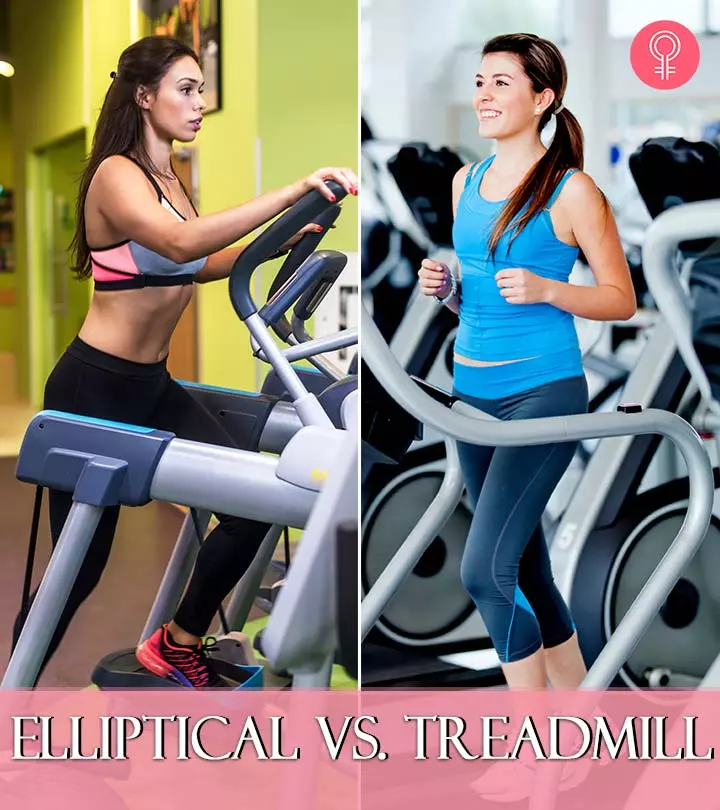
Image: Shutterstock
To burn calories, which one would you choose – an elliptical or a treadmill? Both are cardio machines, but when it comes to the elliptical vs. treadmill question, which of the two wins and gives you quicker and better results? A good understanding of which parts of the body these two machines target can help you make a better decision. As a result, you will burn fat quickly from the areas you want to, lose weight, improve muscle and core strength, and reduce the risk of injuries. In this article, you have explained the pros and cons of treadmill and elliptical machines. By the end of it, you will know which machine is best for you to use. Scroll down!
In This Article
What Is A Treadmill?
A treadmill is a motorized exercise machine with a moving belt that allows you to walk, run, or jog in one place. It provides a controlled environment for cardiovascular workouts and enables users to customize speed and incline settings. Treadmills are popular for indoor running and walking and offer convenience and flexibility to one’s fitness routine.
Key Takeaways
- The elliptical and treadmill are two popular cardio machines, which have their own unique benefits for overall fitness and health.
- The treadmill focuses on lower body workouts and has low impact, while the elliptical is high intensity and offers a full body workout and has high impact.
- Running on a treadmill helps in strengthening bones, while on the elliptical, you can even reverse the pedals, which helps in engaging more muscles.
- The elliptical is easy on joints and puts less pressure on bones, while overusing the treadmill can be tough on the knees.
Treadmill Pros
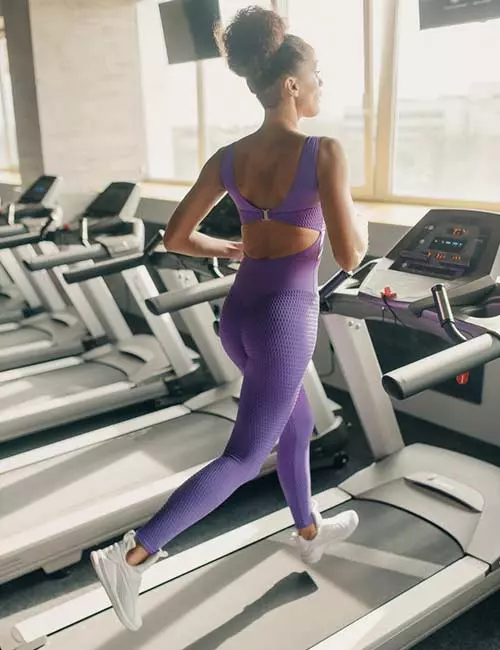
- Versatile
You can use the treadmill at the gym to walk (slow or brisk), run (at 6 mph), or jog. You can also use the incline option to add resistance to your workout. You may also combine all these options for high-intensity interval training. For instance, you may begin with a brisk walk for 5-10 minutes for warm-up. Then, alternate between a sprint and a walk. If you are a beginner, sprint for 20 seconds, followed by 1-2 minutes of walking. For advanced levels, you may sprint and walk for equal durations. Repeat for 15-20 minutes.
- Engages Your Core For Better Posture And Balance

Running requires you to engage your core and activate your ab muscles. This helps your body to build endurance, be more balanced, and prevent you from falling. So, if you run for, say 20 minutes, your core is engaged the whole time. By practicing it regularly, you will build a strong core, which will improve your exercise stamina and also your posture and balance. A randomized controlled clinical trial published in the Iranian Journal of Medical Sciences (2014) assessed the effectiveness of treadmill training on balance control in older adults. Thirty community-dwelling participants were divided into an experimental group that underwent 30-minute forward and backward treadmill walking three times a week for four weeks, and a control group that continued their usual activities. Results showed significant improvements in posture and balance, particularly in quiet standing and standing on foam surfaces (1).
- Burns Calories
Running at 8 mph for 20 minutes may help you burn about 200-300 calories. The number of calories burned also depends on your body weight and the degree of incline used. It is best to keep your treadmill at an incline of at least 3 degrees and run intermittently (run at 6 or 7 mph for a minute and then at 13 or 14 mph for 10 seconds).
- Feels More Natural
Walking and running are something that we are so used to doing every day. So, when you hop onto a treadmill, it will just take you a few seconds to get used to the moving platform. This comfort and ease of use will quickly make you like walking or running on the treadmill.
- Great For The Lower Body
Walking or running on the treadmill targets your calves, hamstrings, quadriceps, glutes, abs, and heart muscles. Therefore, it’s a great workout for your lower body. A study published in the Journal of Aging Research (2025) explored the effects of a 10-week treadmill training program on postural balance in institutionalized older adults. Results showed significant improvements in lower limb strength, such as smoothing the transfer from a sitting to standing position and enabling the participants to cover longer distances (2).
If you have excess fat accumulation in your lower body, running intermittently on the treadmill can help you lose such excess fat effectively.
- Strengthens The Bones
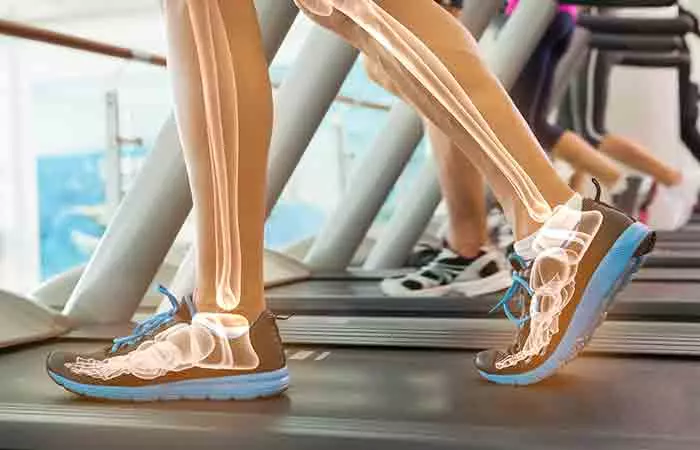
Running requires you to balance on alternate legs. This means that your legs bear the weight of your body alternately. Plus, the incline and speed of running exert double or sometimes triple the weight of your body. Running with correct posture on alternate days strengthens the bones (3), (4).
- Improves Heart Health
Running and walking briskly on the treadmill helps pump up your heart rate and activates the lungs, which can support the strengthening of your heart muscles and improve circulation. A study published in Chest (2012) evaluated the impact of intensive treadmill exercise on women with World Health Organization group 1 pulmonary hypertension (PH). Participants were randomized into an education-only group and an education plus exercise (EXE) group, which included 10 weeks of supervised treadmill walking at 70–80% heart rate reserve. The EXE group showed significant improvements in 6-minute walk test distance, time to exercise intolerance, peak work rate, and multiple quality-of-life measures on the SF-36v2 and CAMPHOR scales. No improvements were seen in the education-only group. The results suggest that aerobic treadmill training is both effective and safe in enhancing cardiorespiratory function and quality of life in patients with PH (5).
Yes, there are many benefits of running or walking on the treadmill, but there are also a few disadvantages that you should be aware of. Here are the cons of using a treadmill to burn calories.
Treadmill Cons
- Posture May Get Affected
The size of the belt may cause you to change the way you walk or run. And over time, it can cause posture problems that may lead to lower back pain and joint pain.
- Not Easy On The Joints
Running fast on the treadmill or slowly for a long duration can be tough on your knees. That’s because your knees have to bear double or triple your body weight. They also absorb shock from the impact of your feet touching the platform.
- Works Only The Lower Body
Walking or running on the treadmill is a great lower body workout, but it neglects the upper body. It might feel like a whole-body workout, but if you think about it, running on the treadmill doesn’t target your upper body muscles to a great extent.
- May Not Be Safe
Not every exercise is meant for everyone. You might be great at running in the field, but you might feel dizzy when it comes to running on the treadmill. Running at high speed and the need to change the speed of the belt can also increase the chances of falling and hurting yourself.
So, does that mean you should steer clear of treadmills? No! Here’s when the treadmill might be useful.
 Did You Know?
Did You Know?When To Use A Treadmill
You may use the treadmill if:
- You want to walk or run as a warm-up session before heading off to do other exercises.
- You need to lose excess fat from your lower body. Use it once or twice a week for 20-30 minutes to burn fat and include strength training to prevent muscle loss.
- You are in a rehabilitation program, and walking slowly on the treadmill helps strengthen your muscles and bones. You should have supervision by a professional in such cases.
- You want to run, but it is not possible to go out for a run due to inclement weather, for example.
When To Avoid Using A Treadmill
Avoid running or walking rigorously on the treadmill if:
- You have recently injured your knee, or have plantar fasciitis or lower back pain.
- You have just had heart surgery.
- Your physician does not allow you to use the treadmill for walking or running.
Tip: Always wear good running shoes while running on the treadmill or outside.
Like a treadmill, an elliptical machine is another important exercise equipment that you can use to enhance your overall fitness. In the following sections, learn everything about the elliptical machine and how an elliptical trainer benefits your overall health.
What Is An Elliptical Machine?
An elliptical machine, also known as an elliptical trainer or a cross trainer, is a stationary exercise device that mimics walking, running, and climbing stairs without putting excessive pressure on the joints. It combines the movements of a treadmill, stair climber, and exercise bike for a low-impact cardiovascular workout. Users stand on the pedals and move their feet to engage their upper and lower body muscles for an efficient full-body workout.
Now, let’s look at the pros and cons of the elliptical.
Elliptical Pros
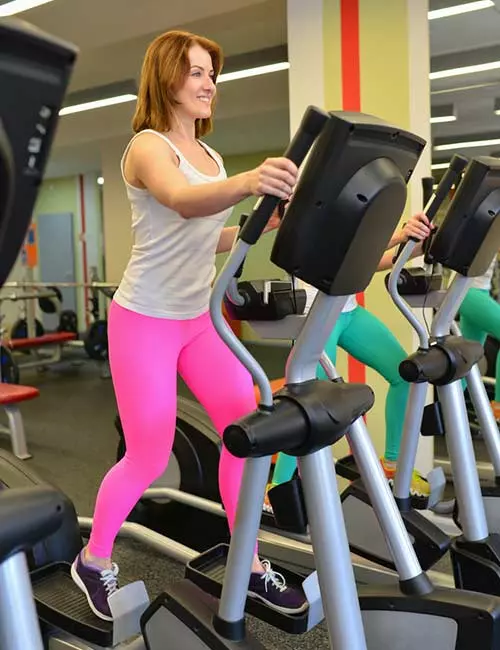
- Low Impact And Easy On Joints
Cardio on an elliptical machine puts less pressure on the bones, especially the knee joints (6). This machine emulates the movement of climbing stairs or cross-country skiing. Therefore, you do not have to stomp your feet on the belt or floor, and that will save you from injuring your knees in the long run (literally!).
- Full Body Workout
The elliptical targets the leg muscles and the biceps, triceps, lats, and the core (7). So, basically, you will get a full-body workout that will help you tone up your body, strengthen your core, and improve balance.
- You Can Go Reverse Too
You can pedal reverse on an elliptical. That way, you will target other muscles and engage in a mixed workout that will get you great results.
- Good Calorie Burner
The elliptical helps burn about 200-300 calories in 30 minutes, which is the same as running on a treadmill. However, with the elliptical, you will get a full-body workout.
Elliptical Cons
- Does Not Strengthen The Bones
The elliptical does not impact your bones and joints. And that’s good news and bad news. Running on the treadmill will help you improve the strength of your bones. But working out on the elliptical has less impact and does not help in making your bones strong.
- Not So Dynamic
On a treadmill, there are options to increase the incline to add resistance to your workout. But, on the elliptical, because the pedals are high up, you do not even fully bear the weight of your body. In turn, there’s minimal resistance to your movement.
So, when is it best to use an elliptical? Let’s find out in the next section.
 Fun Fact
Fun FactWhen To Use An Elliptical
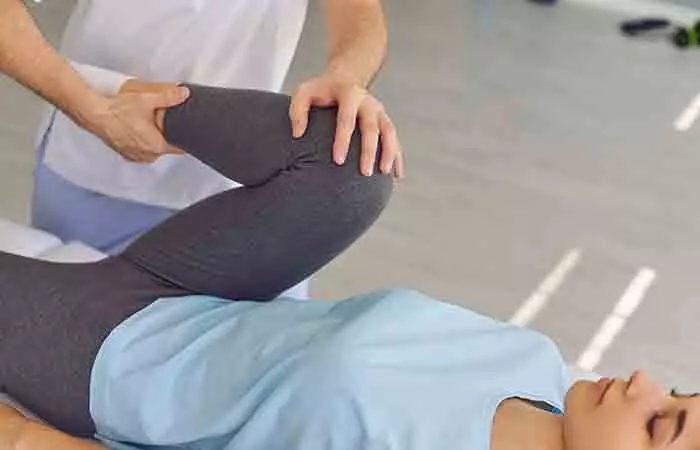
You may use the elliptical when:
- You are recovering from an injury.
- You are overfatigued and need to do low-impact exercises.
- You need a mix of lower and upper body exercise.
When is it best to avoid using the elliptical machine? Find out next.
When To Avoid Using The Elliptical
Avoid using the elliptical if your doctor says so.
Tip: Make sure you are standing upright and not bending forward while using the machine.
If you want to lose weight, you need to burn calories. And both the elliptical and the treadmill burn about the same number of calories. You can also include some high-intensity interval training in your routine. So, which one’s better for weight loss? Let me explain.
Calorie Burn – Elliptical Vs. Treadmill For Weight Loss
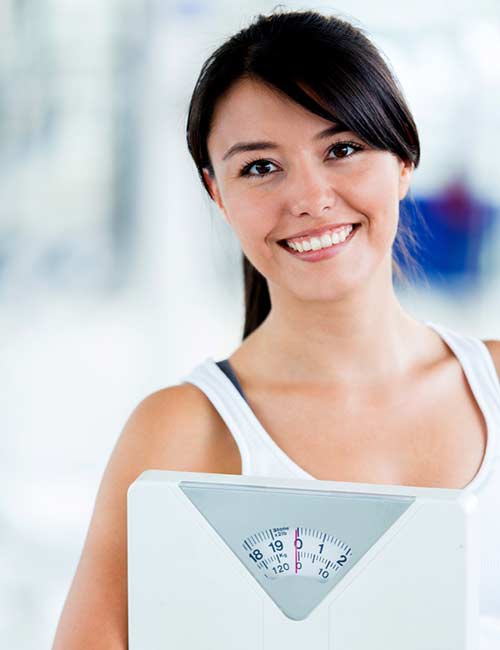
Using a treadmill can help you burn almost the same number of calories as you would if you use an elliptical. But depending on your goal, you should decide if you need a full-body workout or just a lower-body workout. And that will determine if you should use the treadmill or the elliptical.
Yes, you can support weight loss efforts by using a treadmill or an elliptical exercise machine regularly. But also make sure you do strength training each week to preserve your muscles and improve the tone of your body structure.
Zinnia Alexander, a blogger, discusses her experience of attempting a rigorous 2-hour daily workout routine to lose weight and get in shape. She writes, “I would take a 60 min strength training class in the morning, followed by another hour of cardio on the treadmill or the elliptical (i).” However, she found herself exhausted, burned out, and not able to achieve the desired results. The turning point came when she discovered the concept of minimum effective dose, which is defined as “the smallest dose that will produce a desired outcome” in the book The 4-Hour Body by Timothy Ferriss. After applying the idea to her workouts, she observes, “My weight loss is progressing steadily in the right direction, and I have more energy throughout the day. I don’t have to work out for longer to meet this threshold. Instead, I simply increase the intensity, either by using heavier weights or sprinting faster on the treadmill.”
So, what’s best to buy for your home? Let’s find out.
Treadmill Vs. Elliptical: Which Is Best To Buy For Your Home?
The best cardio machine to buy depends on your fitness goals. If you want to prepare for an upcoming marathon, it is best that you buy a treadmill and use it effectively. But if you are recovering from an injury or have a weak knee, it is best that you opt for an elliptical machine.
Infographic: Who Should Avoid Using Treadmill And Elliptical
Treadmills and ellipticals are widely used to perform cardio exercises. However, they are not recommended for everyone. People with certain health conditions should stay away from them. Check the infographic to learn more. Illustration: StyleCraze Design Team
Going through the above points, advantages, and disadvantages of elliptical vs treadmill, should help you decide upon the machine most suitable for your workout routine. Your fitness goals, your overall health, stamina, and the proper functioning of your knees and joints are important factors to keep in mind. You must invest in a good pair of shoes and maintain good posture while using any of these workout machines. Getting used to the way they work and gradually improving your space and duration would help you build strength and stamina over time. You should stop and take a break if you feel any sudden pain or discomfort at any point in time. Choosing to go with any of these machines would amp up your fitness regimen when done right. Make sure to monitor and track your progress to see what works best for you.
Frequently Asked Questions
Will the elliptical get rid of love handles?
No, there is currently no evidence that indicates that elliptical machines can get rid of love handles. A combination of proper diet and exercise will help you lose weight and body fat. Consult your doctor for further information.
Do elliptical tone your buttocks?
No, the elliptical does not tone the buttocks. It is an ideal workout for your glutes, chest, triceps, biceps, and hamstrings
Is the elliptical good for weight loss?
The elliptical offers a low-impact cardio workout that simultaneously engages multiple muscle groups in the body. Hence, one can burn calories and improve overall fitness through it. It is best to combine regular elliptical workouts with a balanced diet and other forms of physical activity for optimal benefits and weight loss.
Is maintaining balance on an elliptical easier than on a treadmill?
Yes, maintaining balance is easier on an elliptical as the feet stay on the pedals while moving in a circular motion. The movement is more stable compared to a treadmill.
Can an elliptical or a treadmill be used for interval training?
Yes, you can use either of these exercise equipment for interval training to alternate high-intensity and low-intensity workout sessions. You can adjust the speed, resistance, and incline to the required intensity of the workout.
Which machine is better for beginners – an elliptical or a treadmill?
Both the treadmill and the elliptical can be adjusted to low settings for beginners to get accustomed to the workout. Ellipticals are low-impact as they put a reduced strain on the joints, thus making them a good choice for beginners who are overweight.
Can a treadmill or an elliptical be used for rehabilitation purposes?
With proper guidance, you can use these machines for rehabilitation after an injury or surgery. You can use them to improve mobility, increase muscle strength, and range of motion in the lower body.
Which machine is more suitable for people with specific health conditions, such as arthritis or back pain?
The elliptical is proven to be effective for people with arthritis or back pain due to the reduced impact on the joints. The treadmill can have a strong impact on the joints and spine. Consult a healthcare professional before using either.
Illustration: Elliptical Vs. Treadmill: Which One Is Better For Your Health?

Image: Stable Diffusion/StyleCraze Design Team
Cannot decide between the treadmill and the elliptical? Don’t worry! Watch this video to find out the pros and cons of each piece of equipment to help you make the right choice.
Personal Experience: Source
StyleCraze's articles are interwoven with authentic personal narratives that provide depth and resonance to our content. Below are the sources of the personal accounts referenced in this article.
i. The Biggest Mistake That Derailed My Fitness Journey and How I Counteracted Ithttps://medium.com/illumination/the-biggest-mistake-that-derailed-my-fitness-journey-and-how-i-counteracted-it-781e060b3e93
References
Articles on StyleCraze are backed by verified information from peer-reviewed and academic research papers, reputed organizations, research institutions, and medical associations to ensure accuracy and relevance. Read our editorial policy to learn more.
- Effectiveness of Treadmill Training on Balance Control in Elderly People: A Randomized Controlled Clinical Trial
https://www.ncbi.nlm.nih.gov/pmc/articles/PMC4242992/ - Effectiveness of a Treadmill Training Programme in Improving the Postural Balance on Institutionalized Older Adults
https://www.ncbi.nlm.nih.gov/pmc/articles/PMC7013321/ - Does running strengthen bone?
https://pubmed.ncbi.nlm.nih.gov/26562001/ - Effects of treadmill exercise on bone mass bone metabolism and calciotropic hormones in young growing rats
https://pubmed.ncbi.nlm.nih.gov/14691683/ - Benefits of Intensive Treadmill Exercise Training on Cardiorespiratory Function and Quality of Life in Patients With Pulmonary Hypertension
https://www.ncbi.nlm.nih.gov/pmc/articles/PMC3566994/ - Knee joint forces: prediction measurement and significance
https://www.ncbi.nlm.nih.gov/pmc/articles/PMC3324308/ - Effects of a single bout of lower-body aerobic exercise on muscle activation and performance during subsequent lower- and upper-body resistance exercise workouts
https://pubmed.ncbi.nlm.nih.gov/24531438/
Read full bio of Staci Gulbin
Read full bio of Ravi Teja Tadimalla
Read full bio of Moksha Gandhi







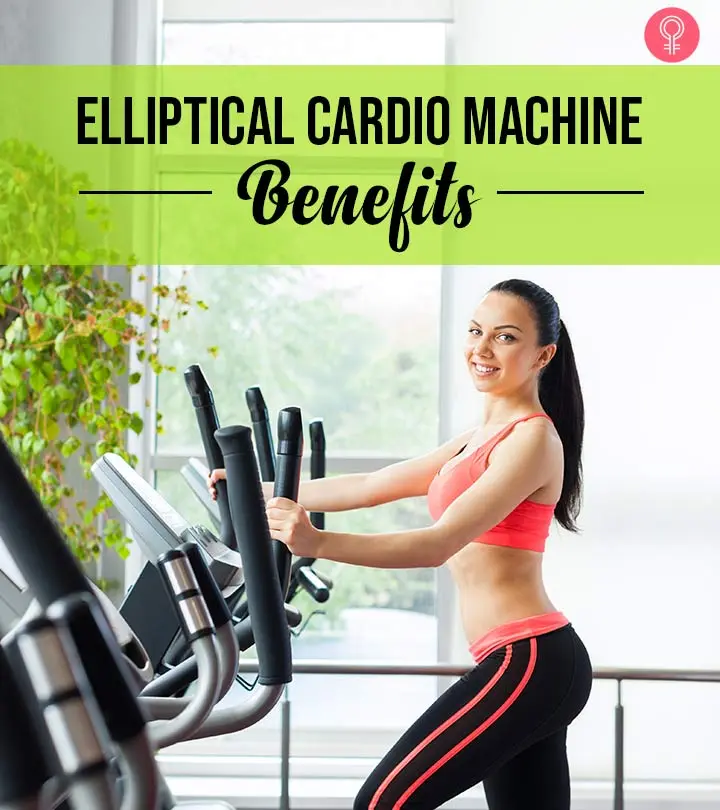
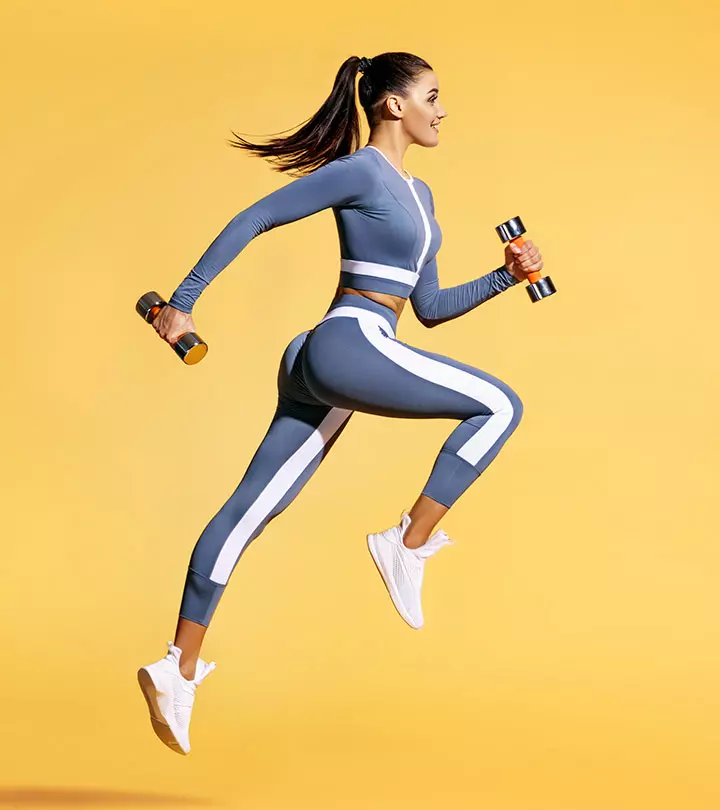
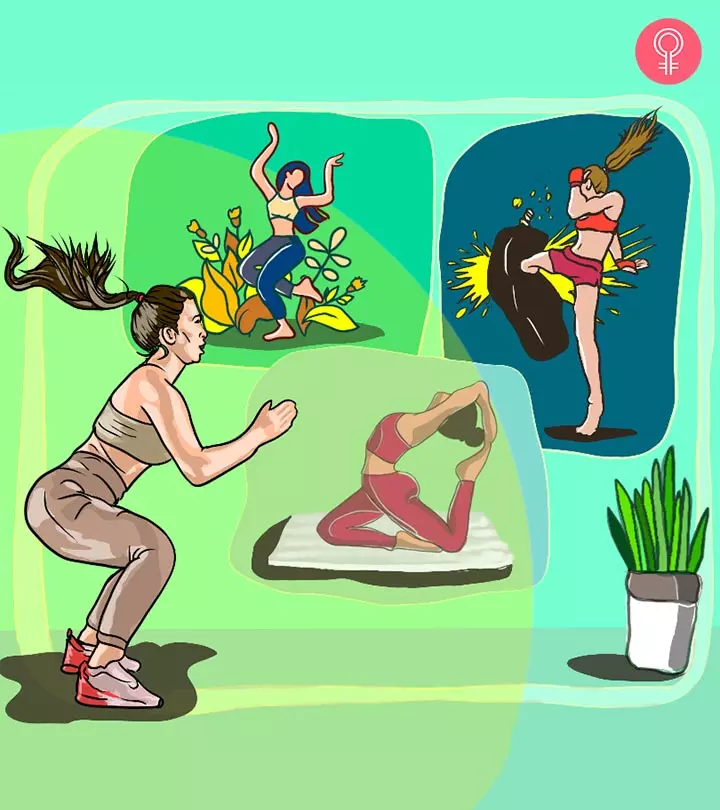

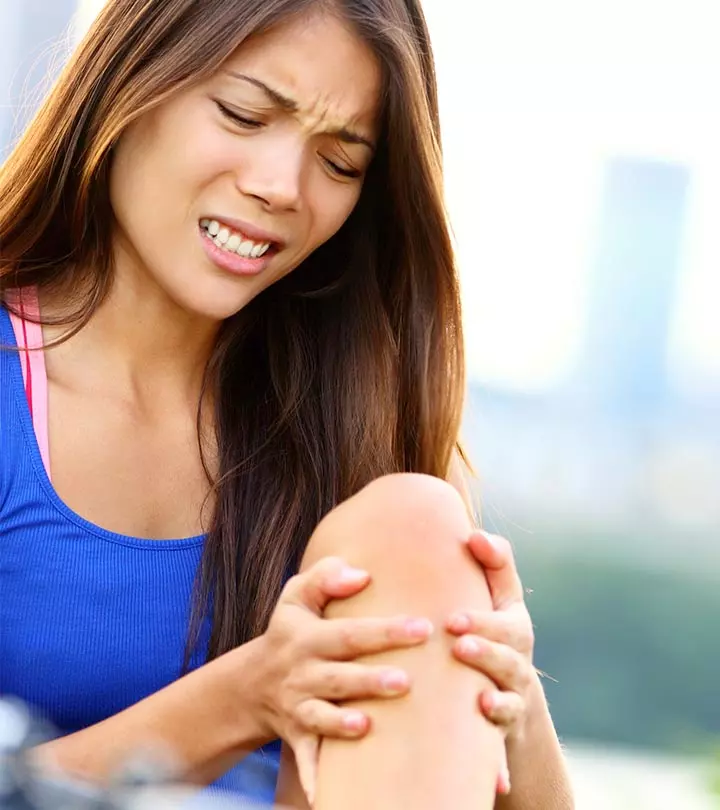

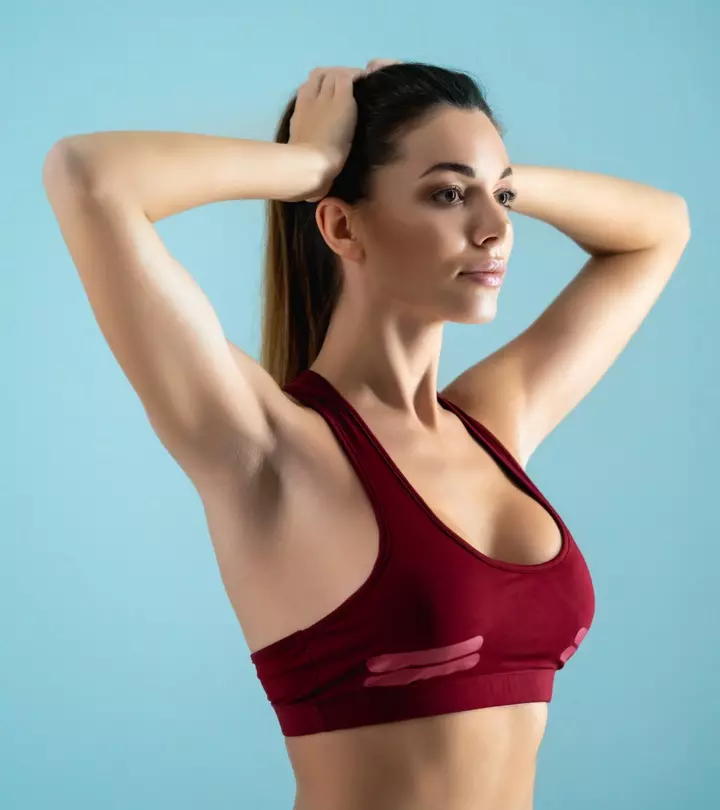
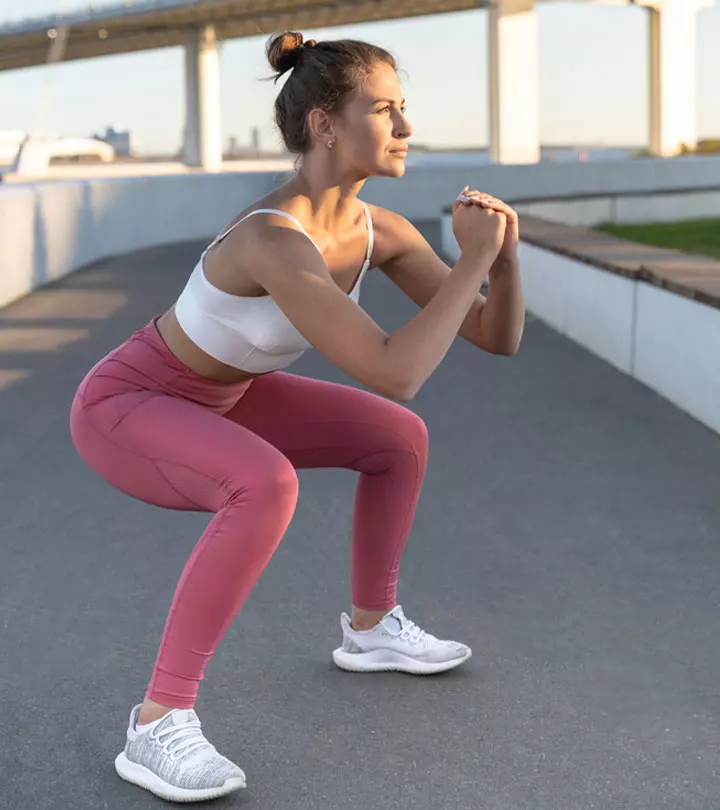
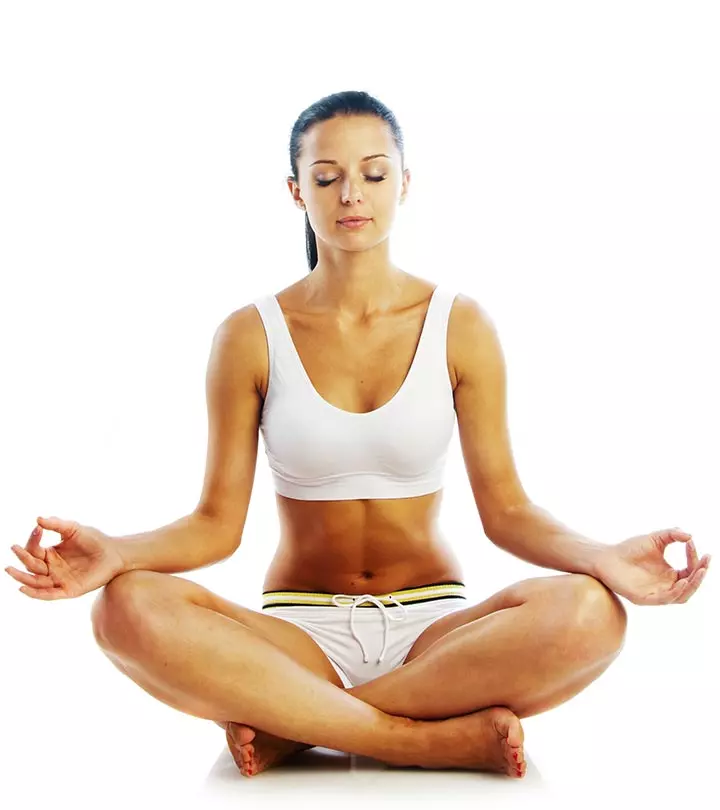
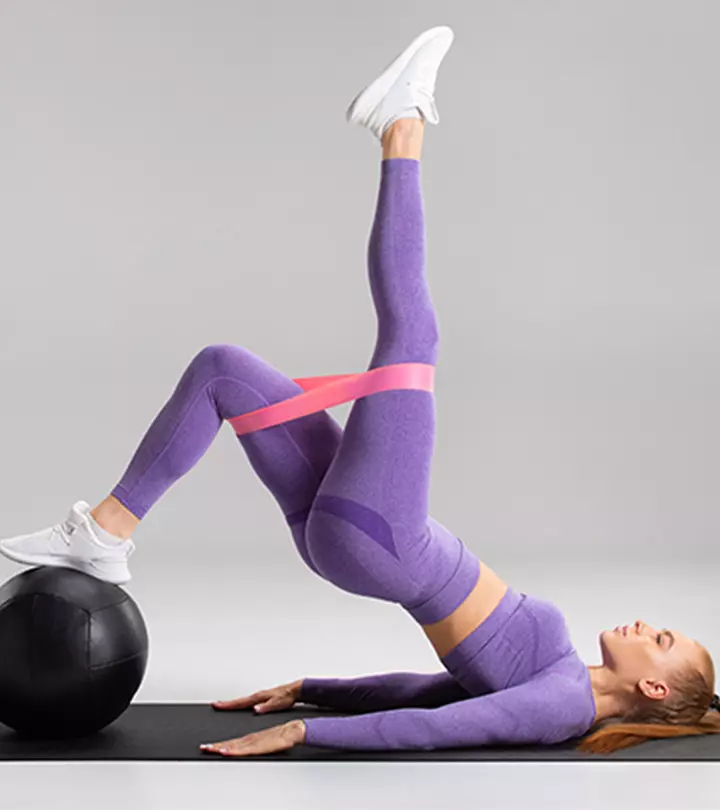
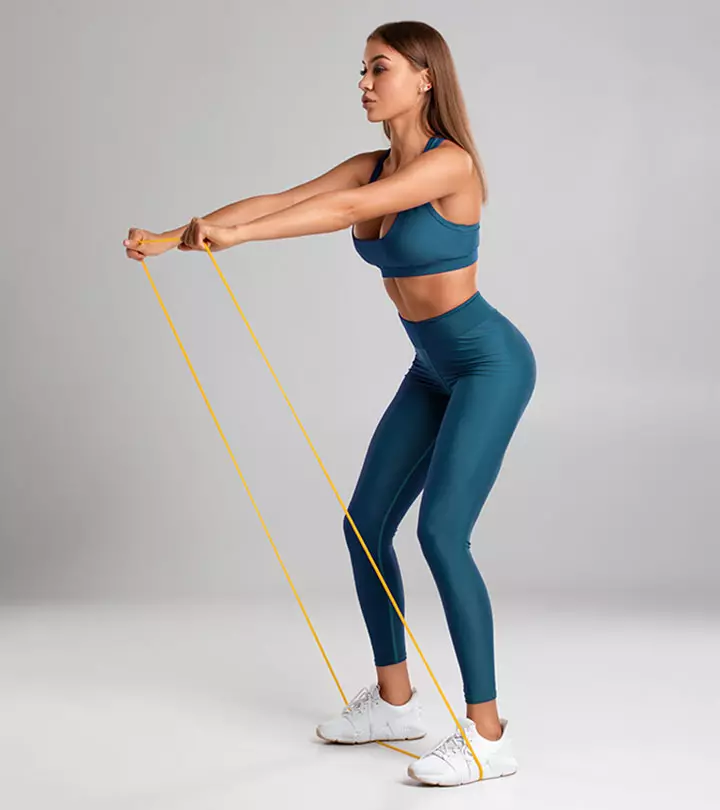
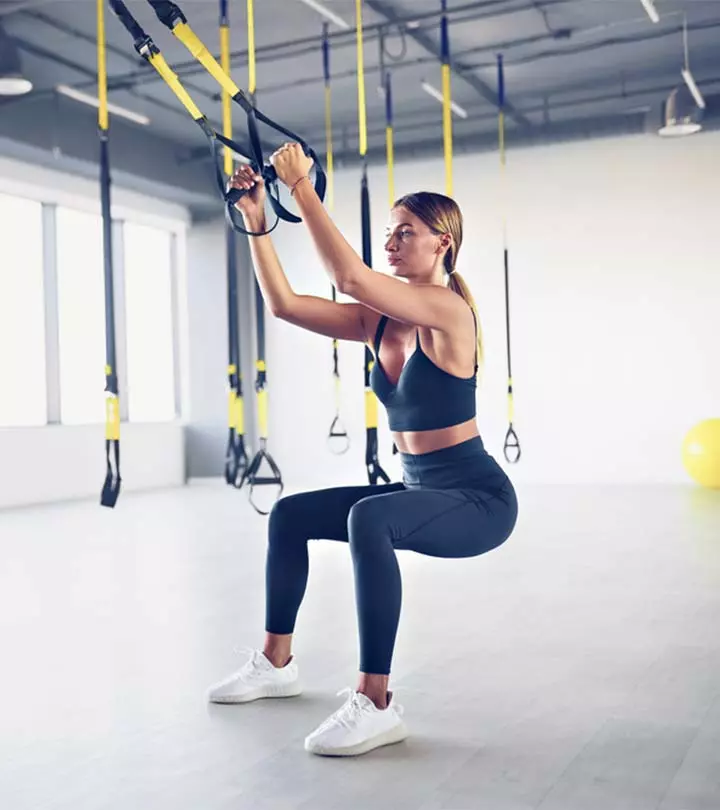






Community Experiences
Join the conversation and become a part of our empowering community! Share your stories, experiences, and insights to connect with other beauty, lifestyle, and health enthusiasts.